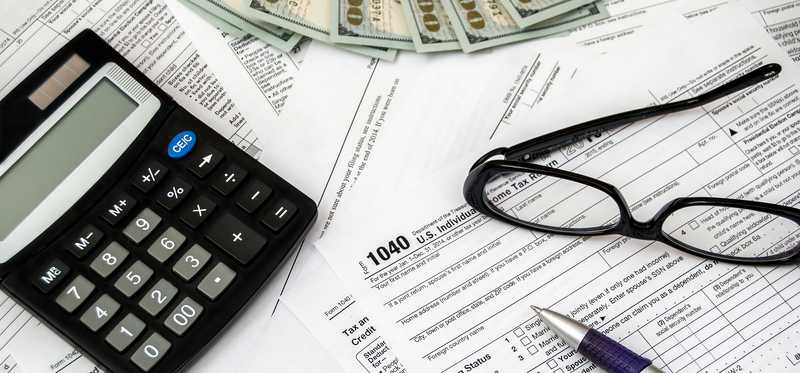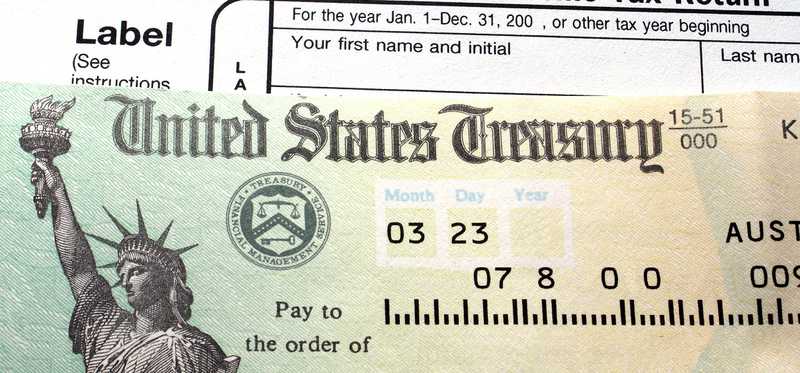The 12 Biggest Tax Breaks in 2019

The 12 Biggest Tax Breaks in 2019
These tax breaks will make an impact
Everybody likes tax breaks, but given how complicated tax preparation already is, most people want to make sure there's enough bang -- and bucks -- on tax savings strategies to justify the effort of finding and using them. Fortunately, with some tax credits and deductions, you can save thousands -- sometimes with relatively little work. Even though tax reform changed many tax rules related to tax breaks, you'll find many old favorites on the list. Here are the biggest ones.
ALSO READ: 70% of Households Are Missing Out on This Important Tax Break
Previous
Next

1. Adoption tax credit
One of the biggest tax breaks on the books is for those who adopt children. The adoption tax credit reimburses adopting parents for up to $13,810 in qualifying expenses when they file their 2018 tax returns in 2019, including adoption fees, attorney and court costs, and travel expenses while away from home. You can only use the nonrefundable credit against tax you owe, although if you've had tax withheld from your paycheck, that's potentially available as a refund. The credit phases out beginning with those with incomes of $207,140 or more, and completely disappears at $247,140.
Previous
Next

2. Standard deduction
Tax reform almost doubled the standard deduction in 2018 to $12,000 for singles and $24,000 for joint filers. The amounts rise in 2019 to $12,200 and $24,400 respectively. It's important to understand that as a deduction rather than a credit, the standard deduction only saves you whatever your tax rate on the amount would've been. Nevertheless, with tax rates ranging from 10% to 37%, a $24,000 standard deduction can save you $2,400 to $8,880 on your tax bill.
Previous
Next

3. Earned income tax credit
The earned income credit is available to low- and middle-income taxpayers. The amount varies by family size and income, but those with three qualifying children can claim as much as $6,557. Those with children start seeing their credit phase out in 2019 when income rises above $19,030 for single filers or $24,820 for joint filers, with the credit completely disappearing once income reaches roughly $41,100 to $55,600. A portion of the earned income credit can be refundable even if the taxpayer doesn't have any tax liability, making it especially valuable to those with low incomes.
Previous
Next

4. Retirement plan contributions
Those who are eligible for 401(k), 403(b), or similar employer sponsored retirement plans at work can deduct substantial contributions in 2019. The limits are $19,000 for those younger than 50 or $25,000 for those 50 or older. You don't need to itemize to claim these deductions, and they'll typically reduce tax bills by thousands of dollars.
Previous
Next

5. American Opportunity tax credit
The American Opportunity tax credit allows eligible students or parents to deduct the first $2,000 in tuition and required fees and course materials each year during four years of undergraduate study, as well as 25% of the next $2,000. That amounts to a $2,500 total credit, with generous income limits that allow the majority of taxpayers to take advantage of the break.
Previous
Next

6. Home mortgage interest
Tax reform preserved the itemized deduction for home mortgage interest, with a new limit for new loans of up to $750,000. The previous $1 million limit was grandfathered for existing mortgages as well. You do have to itemize in order to claim this break, but if you have enough deductible interest and other qualified itemized deductions to go over the standard deduction amount, you can save money -- and mortgage interest is often the biggest itemized deduction for those in good health.
Previous
Next

7. Child and dependent care tax credit
The child and dependent care tax credit offers a credit on up to $3,000 in care-related expenses for one child or $6,000 for two or more children. The amount of the credit depends on income, with a credit rate ranging from 20% to 35% meaning that taxpayers can save anywhere from $600 to $2,100 by using the credit. With no strict income limits on being able to take the credit, it's a good break for anyone with children under age 13 or who are disabled.
Previous
Next

8. Lifetime learning credit
In addition to the American Opportunity tax credit, the lifetime learning credit also offers money back for educational expenses. The credit is 20% for the first $10,000 in eligible costs each year, up to the annual maximum of $2,000. You can't use both credits for the same student, but the lifetime learning credit is a lot more flexible, allowing you to use it on graduate school and even certain continuing education programs.
ALSO READ: 2 Tax Breaks That Were Supercharged by Tax Reform
Previous
Next

9. Child tax credit
Tax reform dramatically improved the child tax credit. Its base amount was doubled from $1,000 to $2,000, and low-income taxpayers can get up to $1,400 of the credit back even if they have no other tax liability. The income thresholds also dramatically increased, rising to $200,000 for singles and $400,000 for joint taxpayers in 2018. That'll let a huge number of people who never before got to claim the child tax credit use it going forward.
Previous
Next

10. State and local tax deductions
You're still allowed to deduct money you pay to cover state and local taxes, including either income or sales taxes as well as property taxes that you pay. However, tax reform limited the maximum state and local tax deduction to $10,000 -- and you still have to be able to itemize in order to get its benefits. That's bad news for those who suffer big tax burdens at the local level, but you can still get a tax break worth up to $3,700 in some cases.
Previous
Next

11. Traditional IRA contributions
Contributions to traditional IRAs are generally deductible for most taxpayers, and while the limits aren't as generous as for employer-sponsored retirement plans, they're still sizable -- and going up in 2019. Those under 50 can contribute $6,000 in 2019, while those 50 or older get an extra $1,000 to bring their total to $7,000. That can translate into thousands in savings to help you with your saving plans.
Previous
Next

12. Savers tax credit
The savers tax credit is another incentive designed to help low- and middle-income taxpayers save for retirement. A credit of between 10% and 50% on up to $2,000 in contributions to 401(k)s, IRAs, or other retirement accounts means that each person can claim a credit of $200 to $1,000, with the highest credit amounts going to those with relatively low incomes of less than $19,250 for singles and $38,500 for joint filers in 2019.
Previous
Next

Be smart and save on your taxes
Not all of these tax breaks are available to every taxpayer. But anyone can claim at least some of them -- and the more you can qualify to receive, the less you'll have to pay. That's good news for just about everyone.
The Motley Fool has a disclosure policy.
Previous
Next
Invest Smarter with The Motley Fool
Join Over Half a Million Premium Members Receiving…
- New Stock Picks Each Month
- Detailed Analysis of Companies
- Model Portfolios
- Live Streaming During Market Hours
- And Much More
READ MORE
HOW THE MOTLEY FOOL CAN HELP YOU
-
Premium Investing Guidance
Market beating stocks from our award-winning service
-
The Daily Upside Newsletter
Investment news and high-quality insights delivered straight to your inbox
-
Get Started Investing
You can do it. Successful investing in just a few steps
-
Win at Retirement
Secrets and strategies for the post-work life you want.
-
Find a Broker
Find the right brokerage account for you.
-
Listen to our Podcasts
Hear our experts take on stocks, the market, and how to invest.
Premium Investing Services
Invest better with The Motley Fool. Get stock recommendations, portfolio guidance, and more from The Motley Fool's premium services.